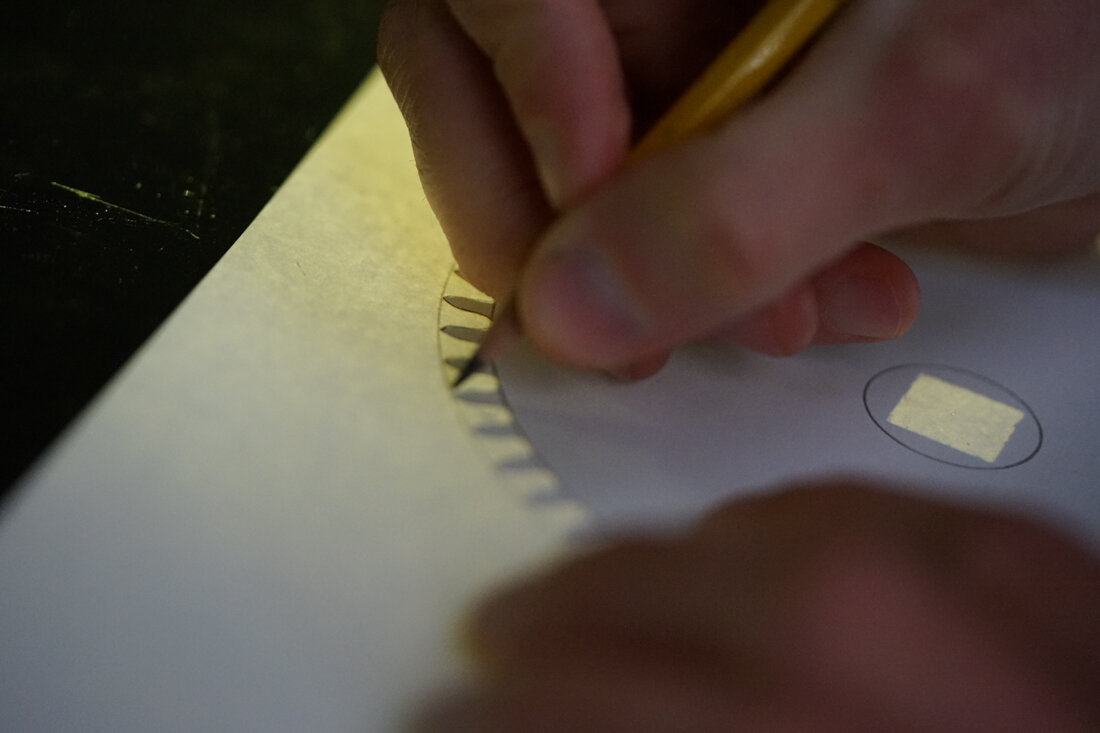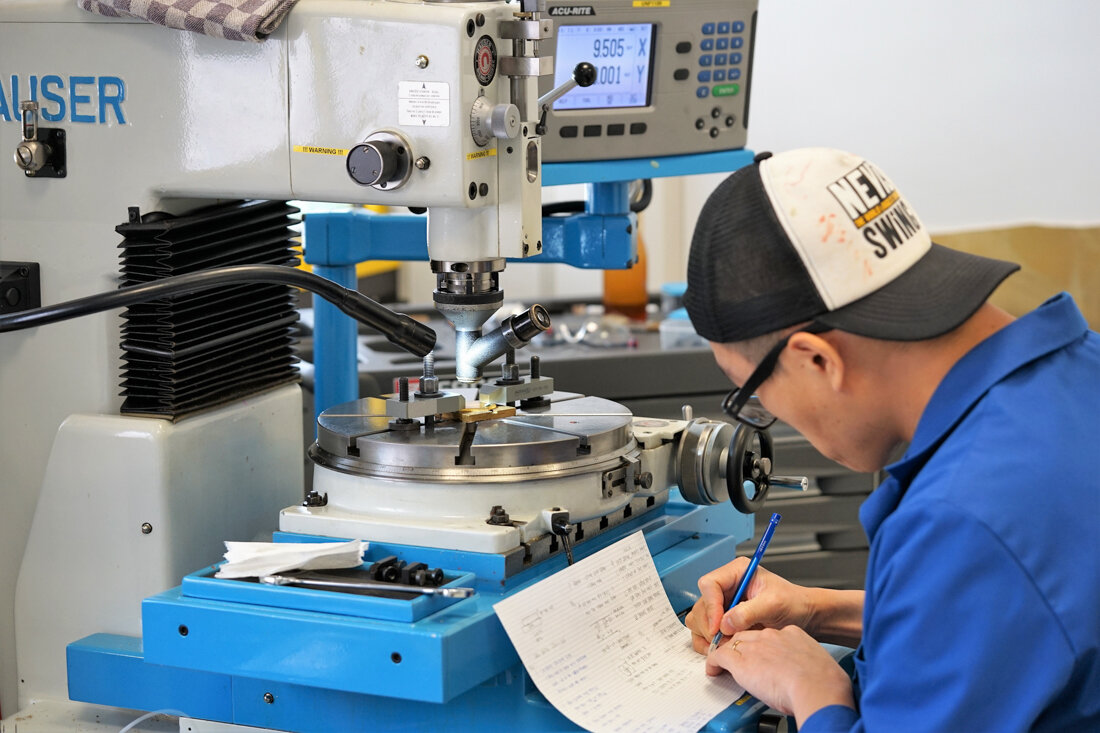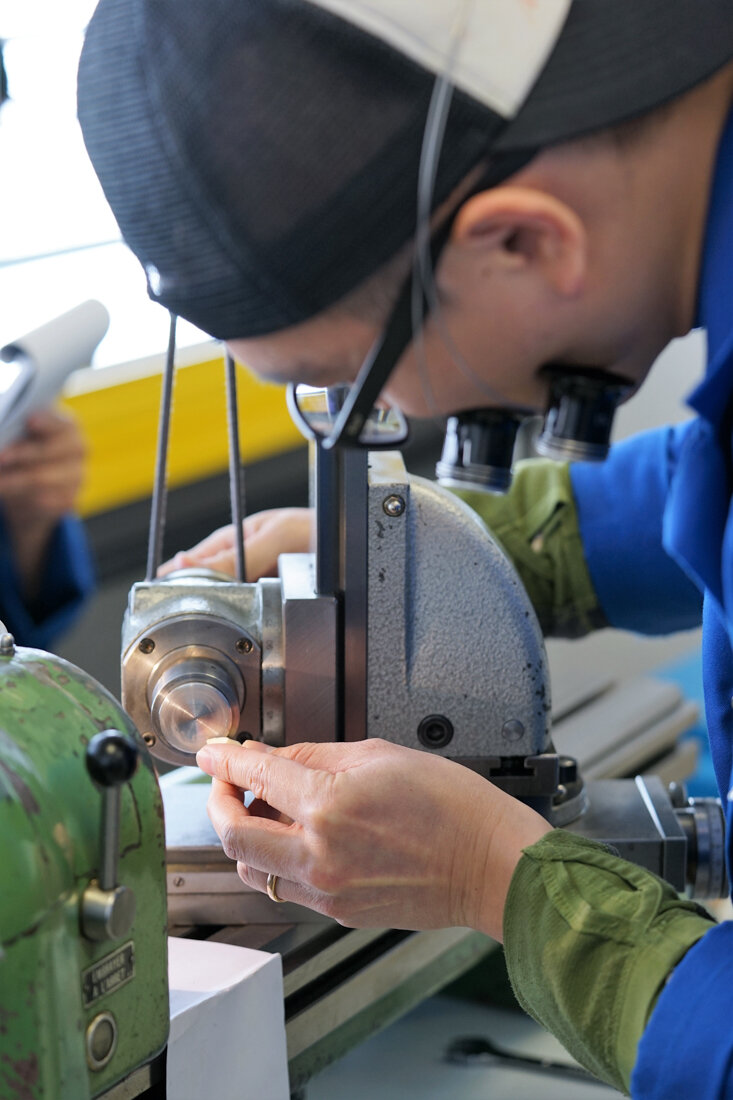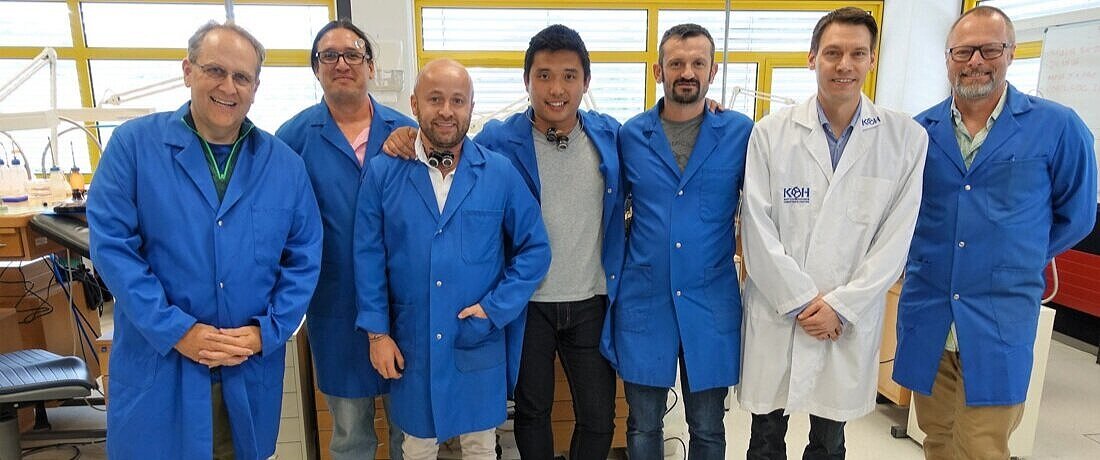The K&H Watchmaking Competence Centre
Developed and run by its founder Swedish watchmaker Henrik Korpela, is a private and independent watchmaking school located in Le Locle.
It was established in 2010 to provide watchmaking courses that focus on both after-sales services, as well as encourage technical creativity, design and classical watchmaking fundamentals. In addition, micro-mechanics is included in the tuition process.
The goal of the courses is to enable the student to operate in after-sales service, repair and production of new watches, and to some extent be able to restore antique and vintage watches where the production of parts is necessary.
Students on the 2020, 4000 hour full-skill training course working on Schaublin lathes.
Students are from all around the world. The teaching language in KHWCC is English. There is a maximum of 6 students per class, providing the instructor with the flexibility to adapt to the student's individual progress.
One of the students working on a watchmakers lathe.
"Students develop the skills, knowledge and confidence to face the ever-evolving watchmaking industry." Henrik Korpela
A series of balance staffs that have been made by a student.
Courses
Full-skill training course (2 year)
The primary, and longest course is a 4000hour full-skill training where students learn the fundamentals of all elements of watchmaking.
The first year focuses on developing micro-mechanical skills:
Filing, Sawing, Drilling, Thread cutting, Milling Boring Turning (hand turning, between centers, turning and bigger lathe turning such as Schaublin 70 and 102), Pivotage, Grinding, Heat treatment operations, Electroplating, Polishing, Various decoration techniques such as frosting, bevelling, polishing, snailing, circular graining, spotting.
Explaining the sequence to be able to machine a component.
Burnishing balance staff pivots in a Jacot tool.
At the start of the second year students micro-mechanical abilities are developed enough to begin learning watchmaking, where they learn:
Cleanliness, manipulation, and oiling Winding & setting mechanism, Motion work and theory, Barrel practice and theory, Gear train practice and theory, Escapement practice and theory, Oscillator (balance spring & balance practice and theory) Precision timing, practice and theory Chronographs, practice and theory Automatic modules, practice and theory Calendar mechanism, practice and theory Encasing practice, Basic repairs, full service and quick repairs.
Newly made pinion and wheel positioned inside of a depthing tool to align penetration of the teeth.
Interviews with students working on the 4000 hour/2 year course. (2020)
School watch course project (4 months)
The school watch project is an individual undertaking of the student, based on their motivation and interest of making a school watch; they are free to do whatever they want as long as the instructor agrees that the project is possible to do within the time frame, they are encouraged to work independently when possible, while being provided advice from the instructors.
"Service and Repair Technician course" (8 months)
Is open to students who want to learn purely, the servicing of modern mechanical watches.
Designed for people who would like to learn repairing and servicing watches or watchmakers who want to refresh the after-sales service and repair procedures as well as upgrading their skills.
The program
Barrel and Gear Train Course
Includes; studying and practicing the repair and servicing of the winding and setting mechanism, barrel and mainspring, gear train, jewelled bearings etc. on modern and vintage movements.
Escapement Course
Includes; studying and practicing the service, repair and adjusting of various Swiss lever escapements on modern and vintage movements.
Oscillator Course
Includes; studying and practicing the service, repair and adjusting of various balance and hairsprings, as well as practicing precision timing on modern and vintage watches.
Chronograph Course
Includes; studying and practicing the service and repair of different types of modern and vintage chronograph watches; Column wheel and cam operated, vertical and horizontal clutch systems, modular and automatic chronographs.
After Sales Service and Repair Course
Includes; practicing of servicing and repairing complete movements and watches, dealing with cases, dials and hands, various common after sales service procedures, timing of complete movements and watches as well as other subjects relating to after sales service and repair of complete watches.
Other Courses
Includes; studying and practicing the service and repair of the automatic, calendar, and quartz watch. If time allows some simple tool making and practicing some watch parts finish will be addressed as well.
Short specialized courses
Are proposed to watchmakers who want to improve their skills or to companies ordering tailormade courses for their employees.
Course on Vintage Chronograph Valjoux 22/23
This 5 day course on the classical column wheel chronograph aims to give the watchmaker both a better theoretical understanding of chronograph's as well as a hands-on practicing on the movement and how to restore and adjust them.
It also serves as a refresher course for watchmakers whom wish to refresh their knowledge on the column wheel chronographs.
Course on Finishing Techniques
Classical movement finishing techniques, including Black polishing, Frosting, and Graining.
Emphasis on trying out the classical finishing techniques for the student to get an overview on finishing.
The course includes
Black polishing steel parts such as screws and levers.
Frosting bridges and other soft metal parts.
Counter sink polishing of screw and jewel holes.
Bevelling bridges and other movement parts.
Making steel parts matt.
Blueing.
Electroplating with Rhodium or gold.
Tool and material knowledge.
Example of a standard movement (left) that has been taken and the bridge form altered. The brass and steel parts refinished by hand.
Polishing the flat surface of a steel screw to achieve a black/mirror finish.
Course on balance spring maniplulation.
The course includes how to replace a balance spring in vintage and antique watches. All the steps involved in taking a raw balance spring, colleting, adding the stud, vibrating it to the correct frequency and making it run in the movement.
Tailormade courses for watchmakers & companies
The schools tailor-made courses are specially designed for companies and watchmakers wishing to gain more competence in a specific area of classical watchmaking. Such as restoration, various finishing techniques or improving a specific skill requested by the company or watchmaker.
Diverse images from the school, please click the square to see the full image.
The students on the 2018 restoration course with Henrik
The majority of the written material and images above have been kindly forwarded by Henrik Korpela.
To learn more about the K&H Watchmaking Competence Centre






























